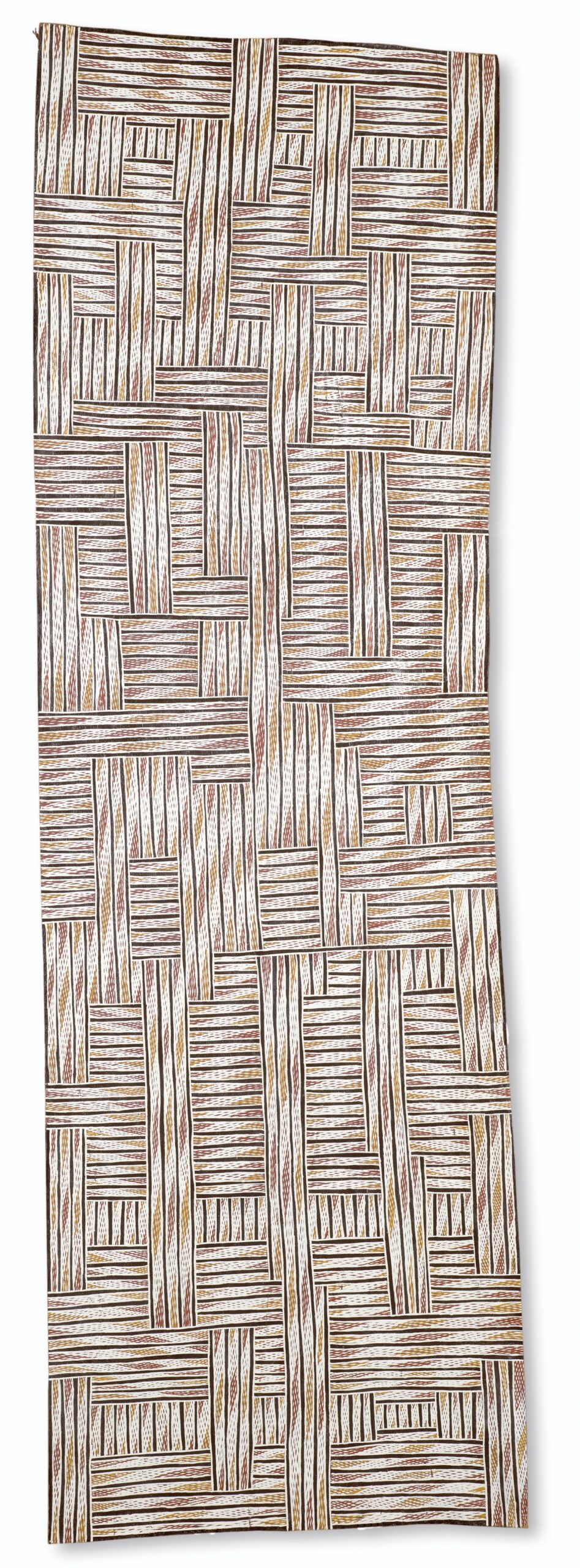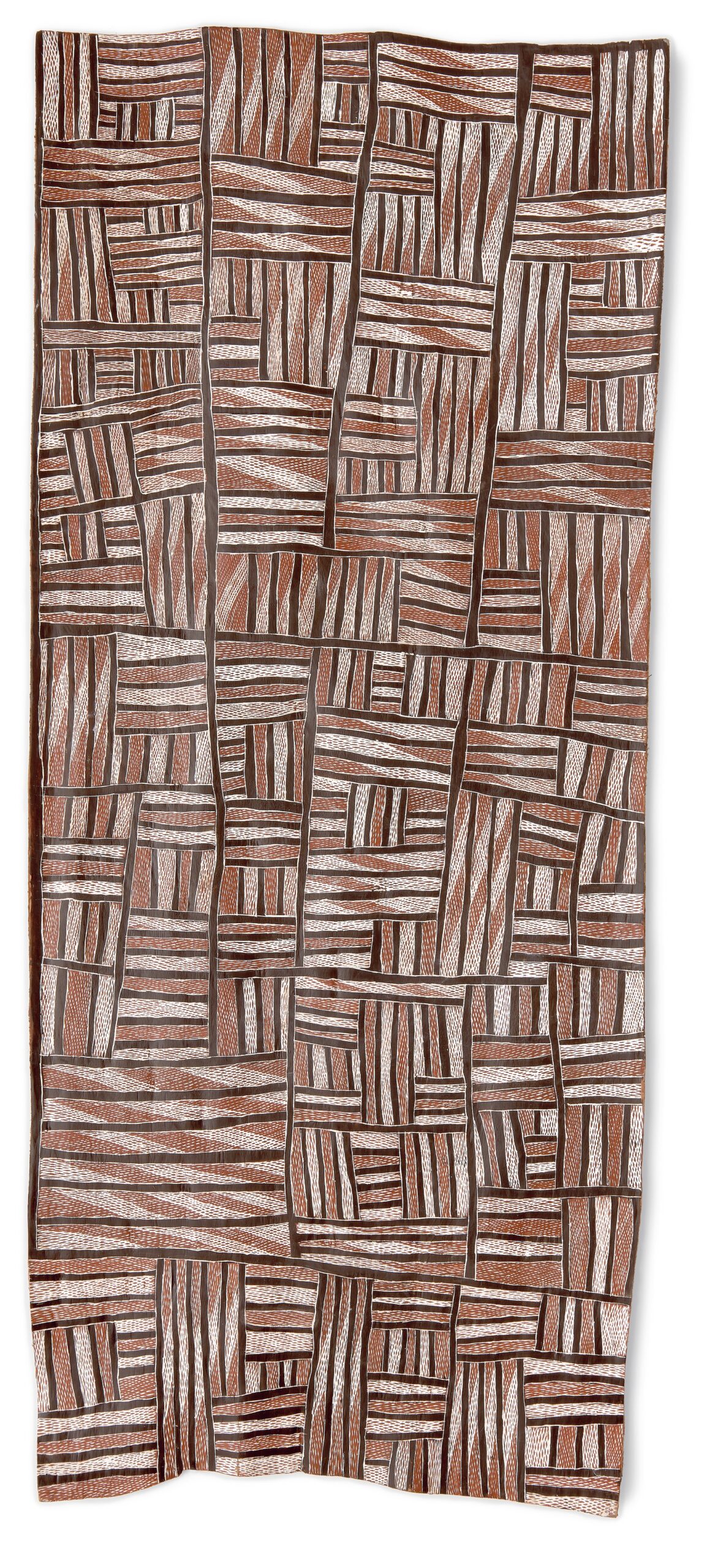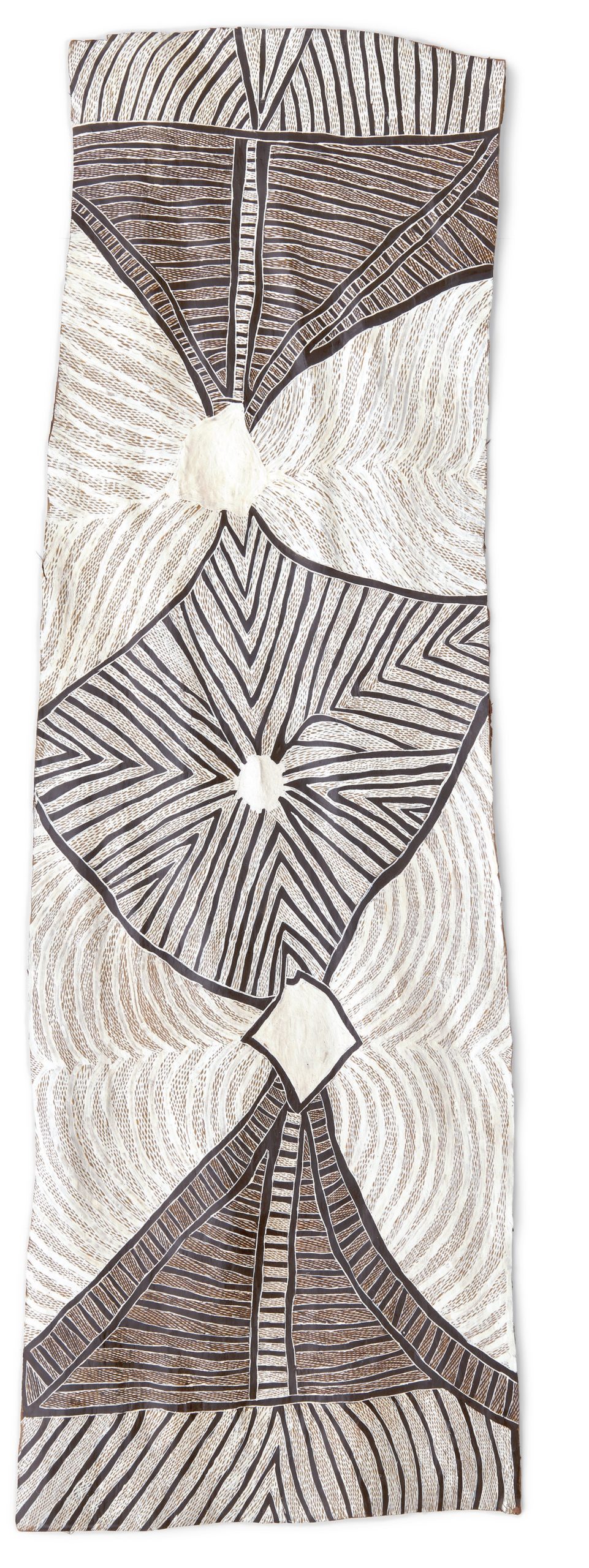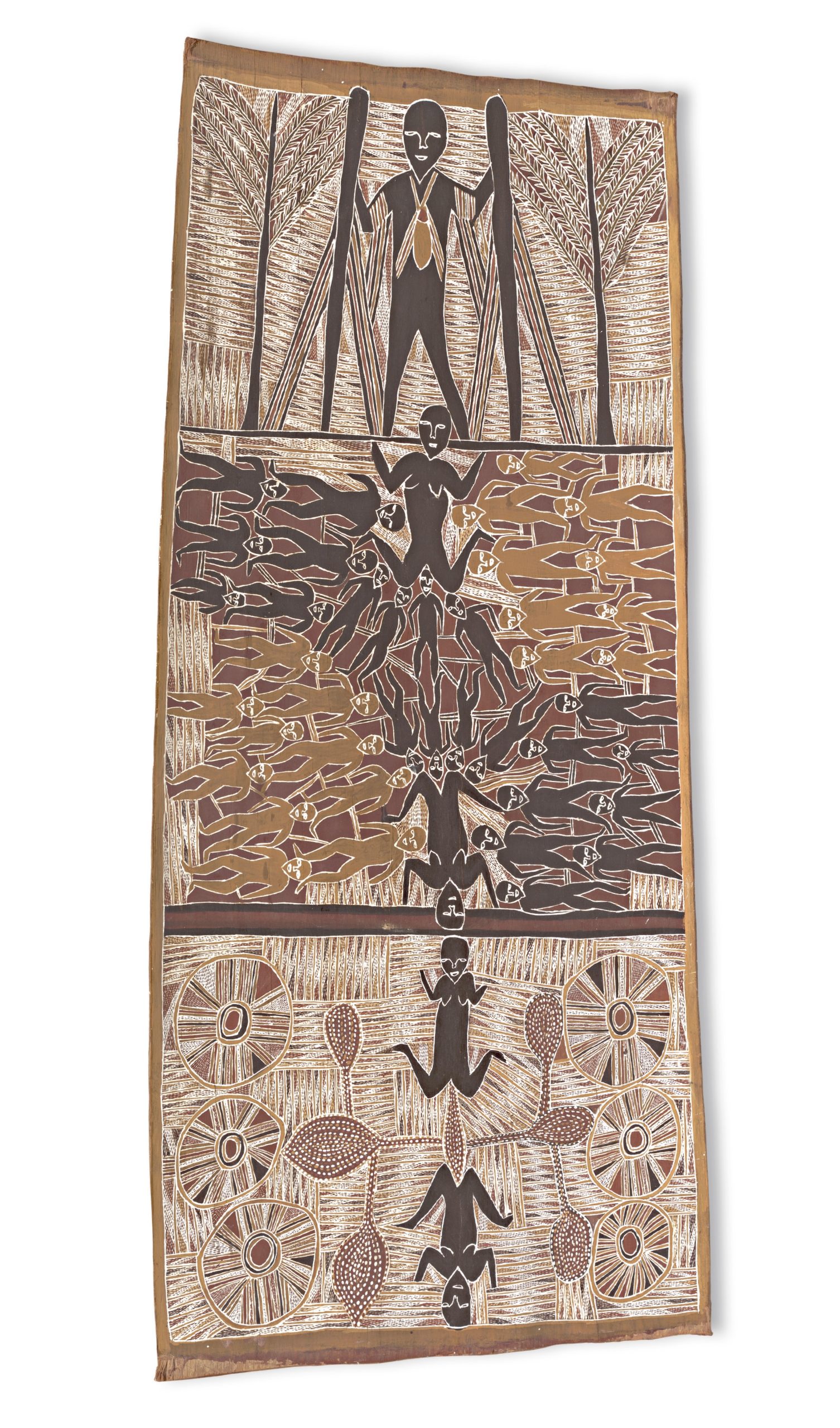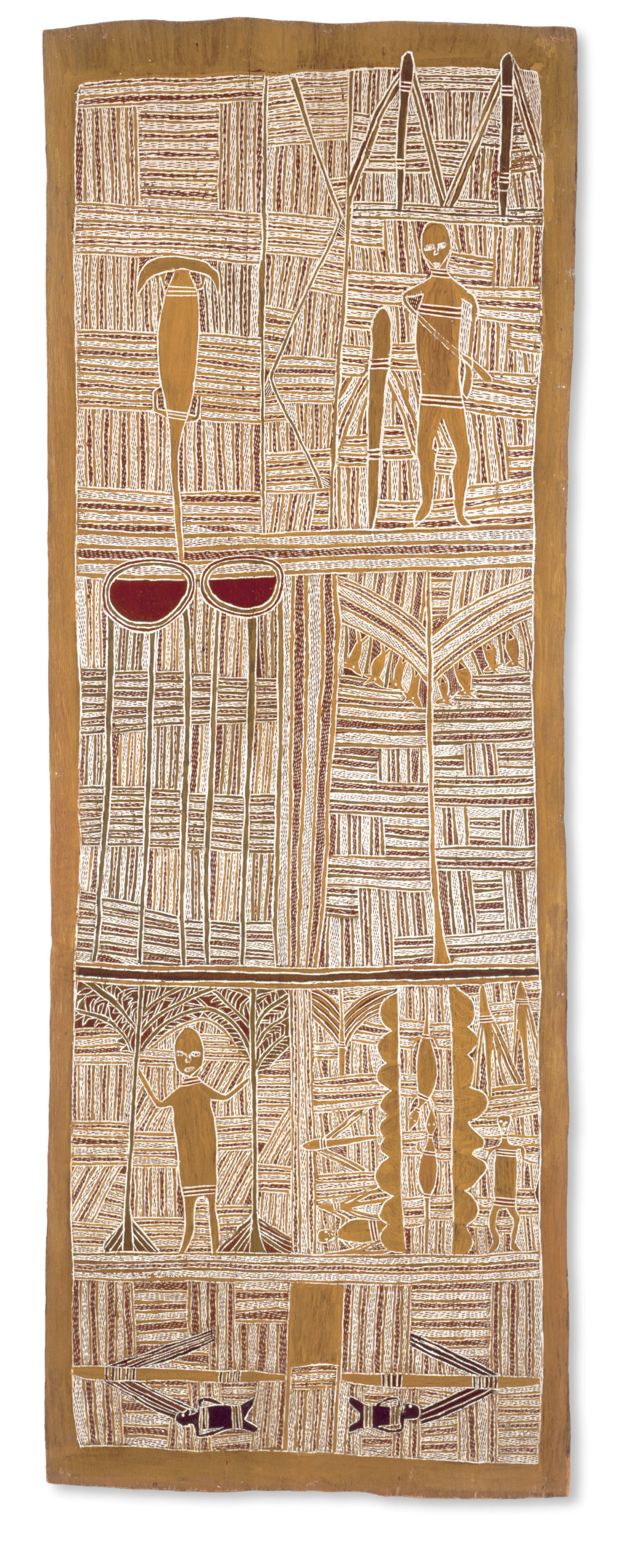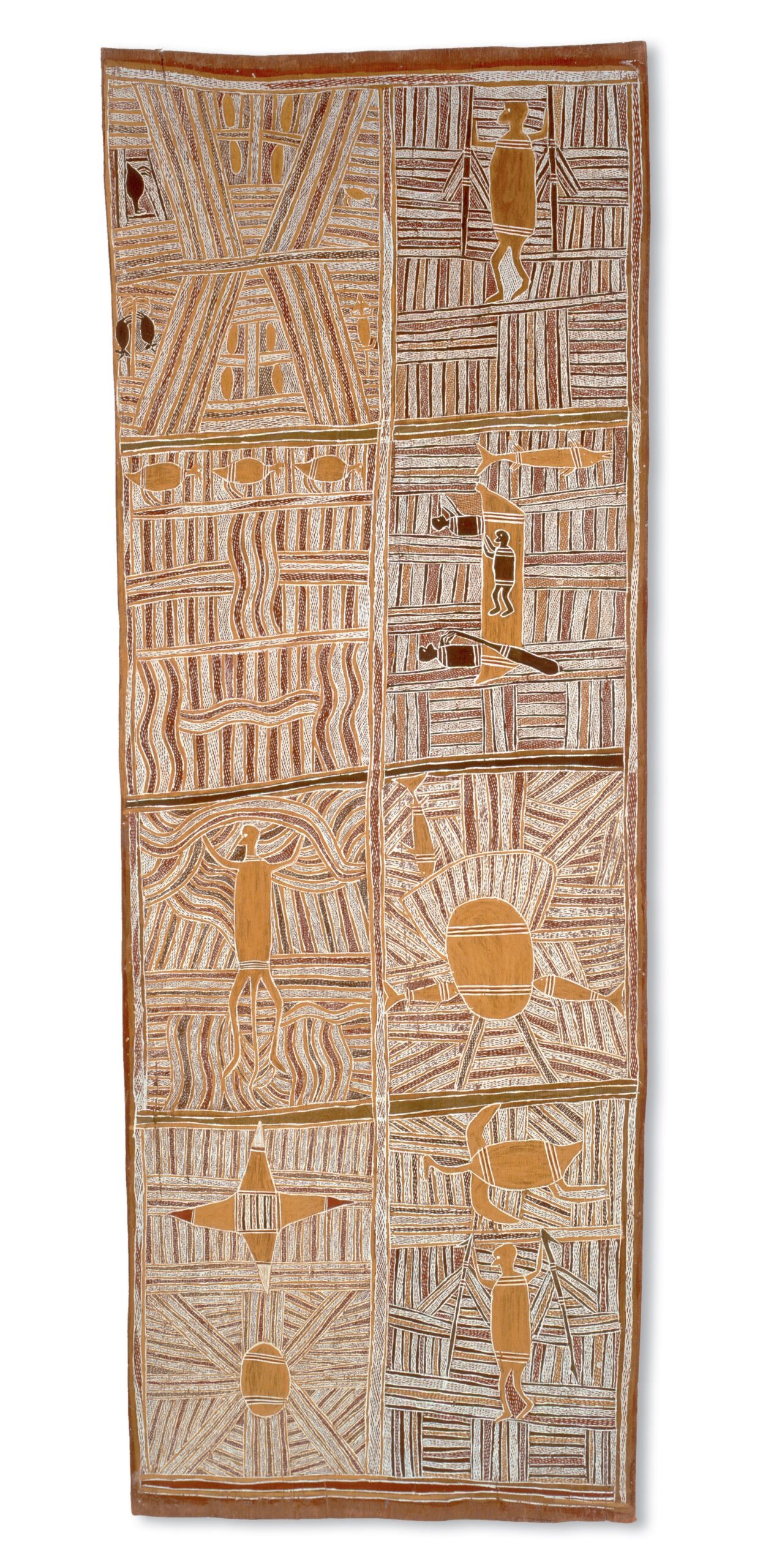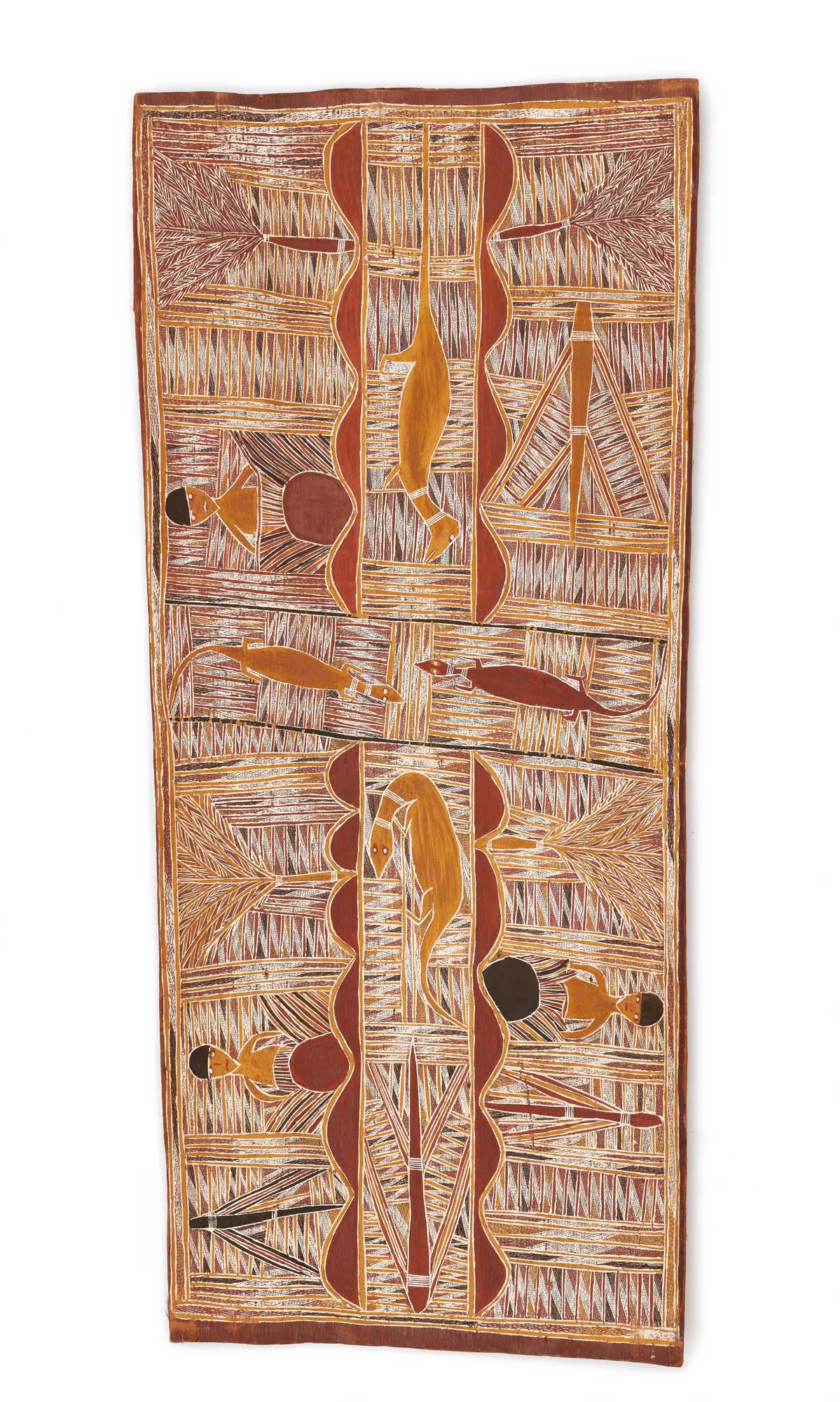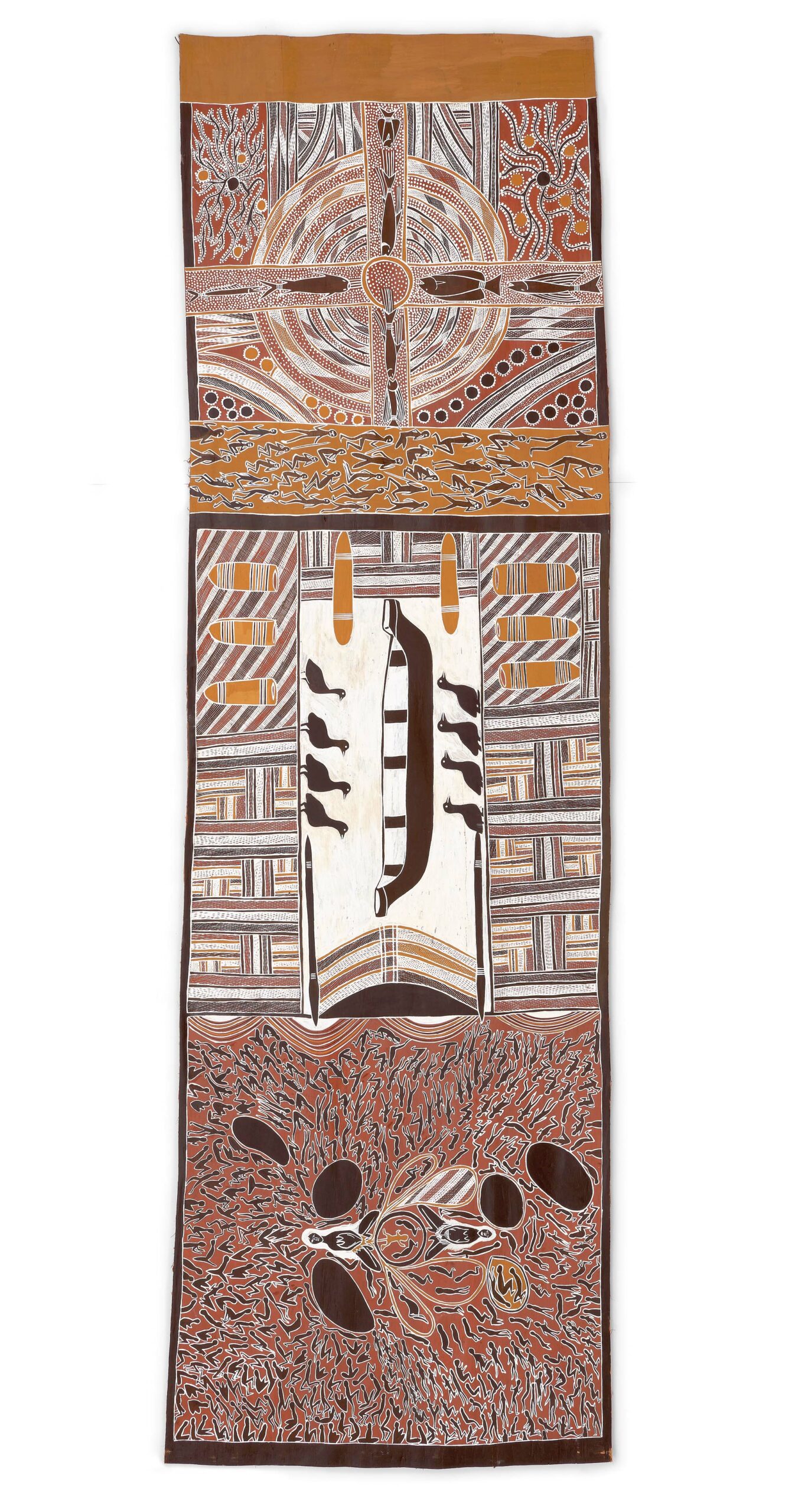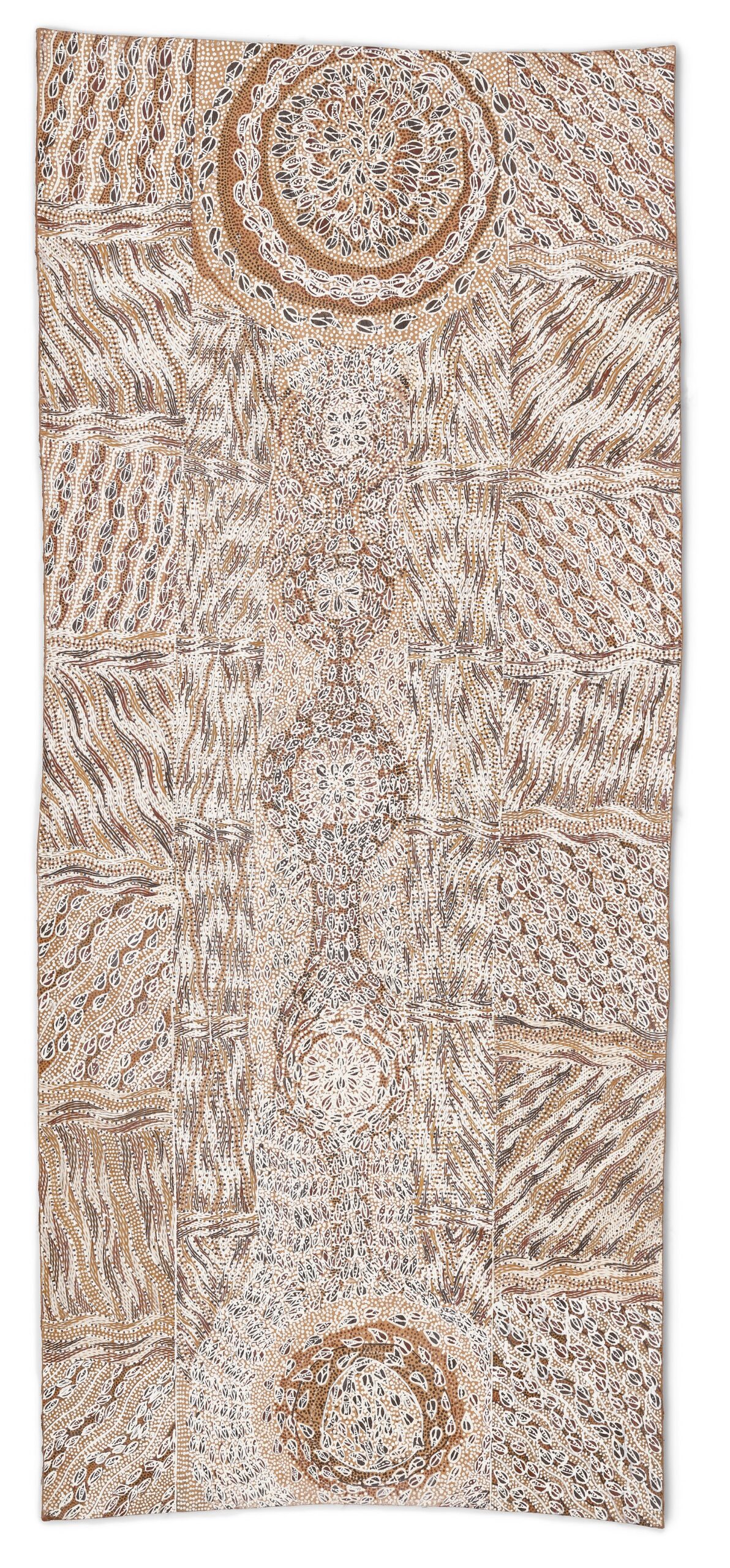
Rirratjiŋu
The Rirratjiŋu clan belongs to the Dhuwa moiety. The major spiritual themes relate to Yalaŋbara, where the Djan’kawu first landed.
Rirratjiŋu homelands are the lands around Yirrkala, on the east coast of the Gove Peninsula.
The patriarch, Djuwakan Marika, was the father of six sons who played a central role in Australian art and politics. The oldest, Mawalan Marika, negotiated the establishment of the Methodist mission at Yirrkala in 1935.
Along with his brothers, Mathaman, Milirrpum and Roy Daydaŋa, Mawalan was a powerful advocate for Indigenous rights. The brothers played a central role in the first Aboriginal land rights case brought to federal court. Milirrpum v. Nabalco eventually led to the Aboriginal Land Rights (Northern Territory) Act of 1976.
Mawalan’s oldest son, Wandjuk Marika, became one of the best known Aboriginal artists, traveling the world to promote Indigenous Australian art.
Mawalan also broke with convention by teaching his daughters to paint. Dhuwarrwarr Marika was the first woman permitted to paint maḏayin miny’tji (sacred designs). Her sister Dr. Banduk Marika AO was a widely renowned artist who was appointed an Officer of the Order of Australia in 2019.
The consulting curators from the Rirratjiŋu clan for this project were Wanyubi Marika, Ishmael Marika, Dhuwarrwarr Marika and Dr. Banduk Marika AO.
Filter By
- Select a Filter
- Clans
- Songlines
Selection
